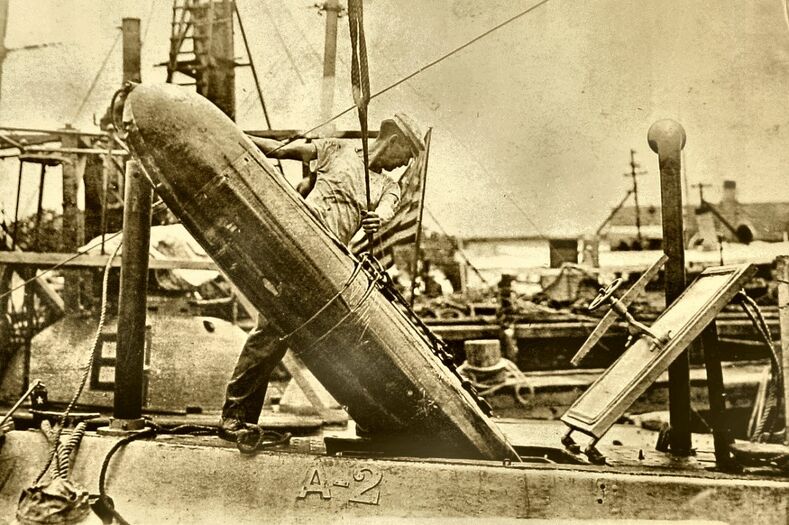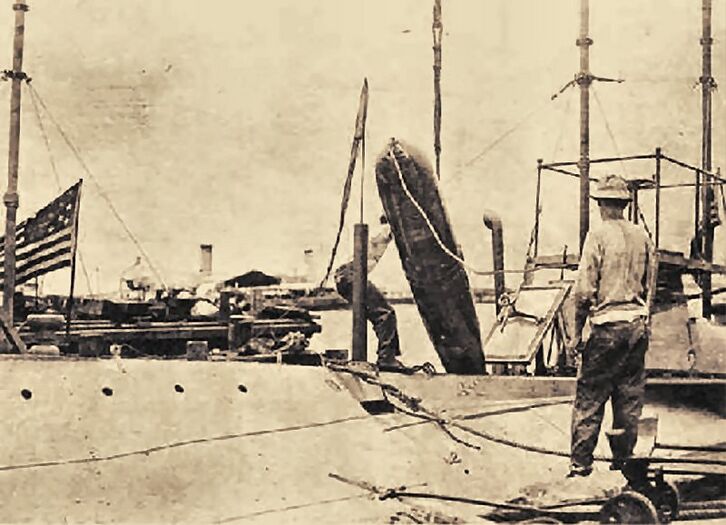Torpedo photos & information
Whitehead Mk 2 & Mk 3
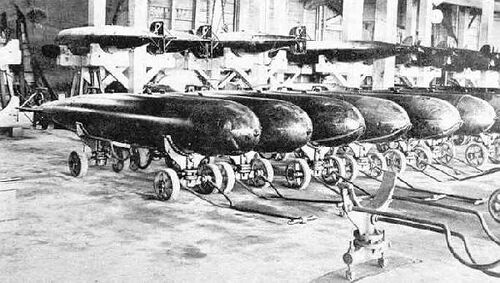
Whitehead Mk 3 torpedoes stored at the weapons depot at Naval Station Cavite, Philippines, approximately 1906. The wheeled carts allowed the quick movement of the weapons from storage to the pier.
Photo in the private collection of Ric Hedman.
-
Photo NH 90188 courtesy of the NHHC.
-
U.S. Navy photo.
Navy photos of a Mk 3 weapon being loaded into the USS A-2 (Submarine No. 3) at Naval Station Cavite, Philippines, circa 1912. The sailor manhandling the weapon down the hatch gives a good sense of scale to the torpedo, and illustrates how short the mid-body was compared to later torpedoes. Our early submarines were restricted to the use of these short weapons because they were the only ones that would fit inside the boats and the tubes they used. That would quickly change.
Bliss-Leavitt Mk 4 Mod 1
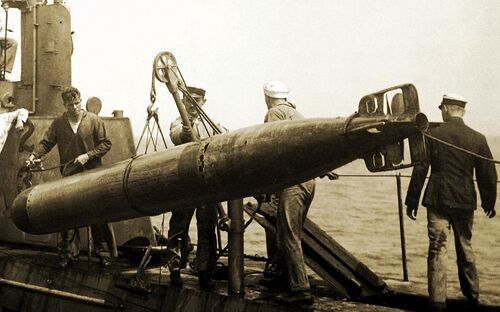
D-3 hoisting aboard a Mk 4 torpedo that it as just recovered from a practice shot, circa 1912. This photo gives a good view of the aft end of the weapon, including the control surfaces and the twin contra-rotating propellers. The twin propellers spinning in opposite directions eliminated roll torque, preventing the weapon from cork-screwing along its longitudinal axis. Eliminating the roll torque also allowed the gyro to maintain a more accurate course.
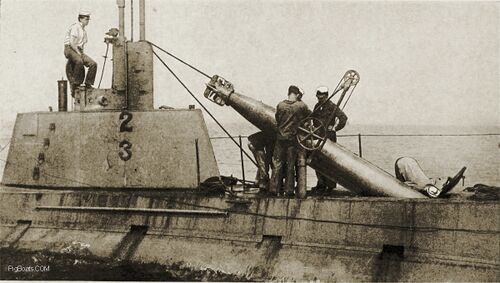
Another view of the operation shown above. There is a snubbing line attached to the aft end of the weapon, looped around the #1 periscope. This line allowed the weapon to be gently and carefully lowered into the torpedo room.
Bliss-Leavitt Mk 6
Currently, PigBoats.COM does not have a good picture of a Mk 6. An idea for its appearance can be gained from the Mk 7 pictures below.
Bliss-Leavitt Mk 7
Bliss-Leavitt Mk 9 Mod 1B
Bliss-Leavitt/BuOrd Mk 10 Mod 3
BuOrd Mk 14
Westinghouse Mk 18 Mod 1
BuOrd Mk 23
Page created by:
Ric Hedman & David Johnston
1999 - 2023 - PigBoats.COM©
Mountlake Terrace, WA, Norfolk, VA
webmaster@pigboats.com

